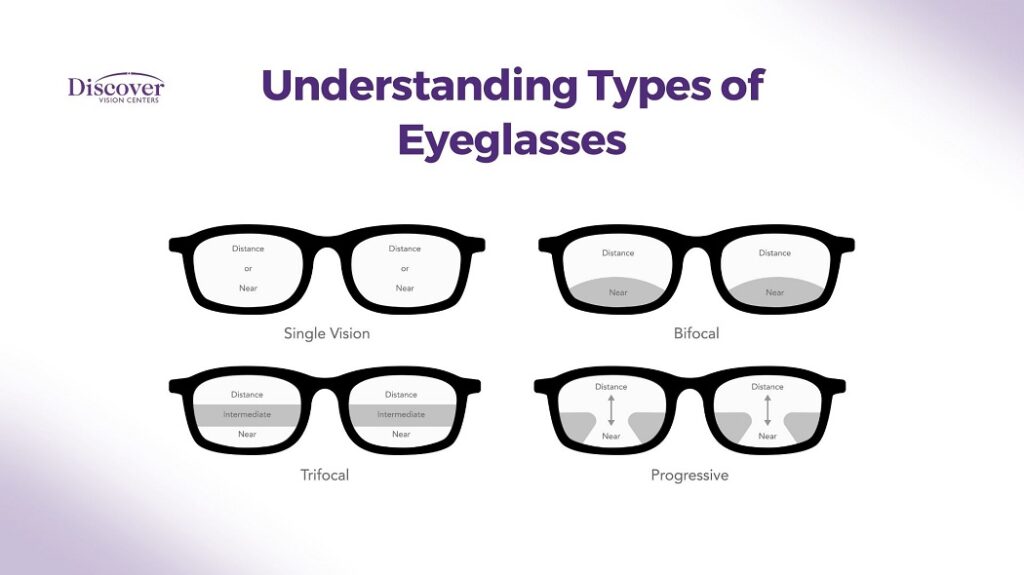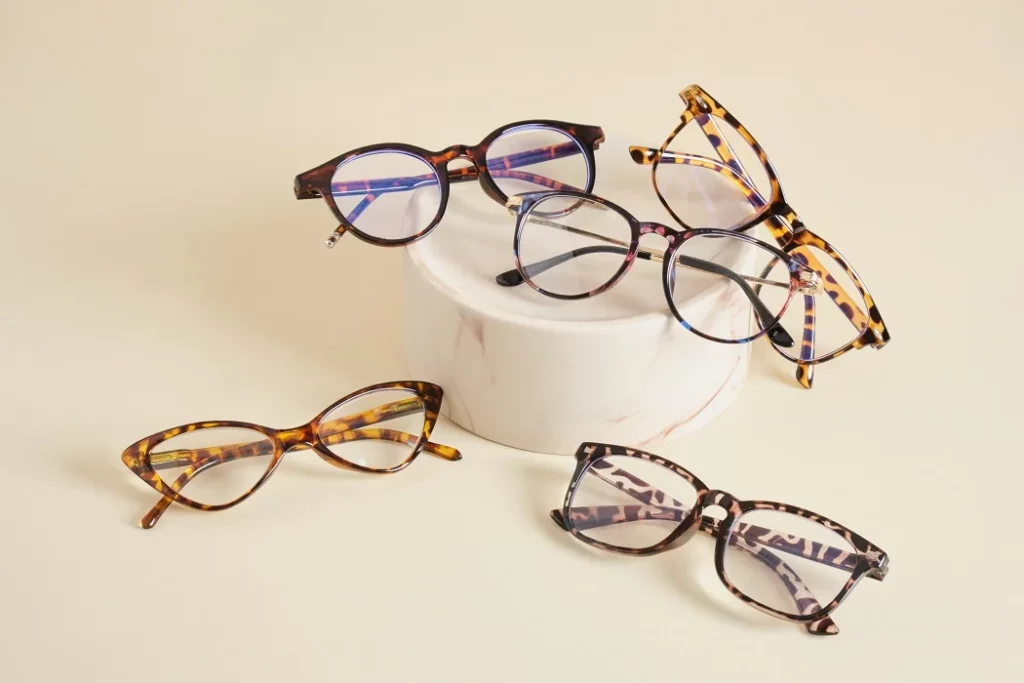
Updated: February 02, 2024

“How much are eyeglasses?” It’s a popular question. If you’re curious about the cost of glasses without vision insurance, you’re not alone. Whether you’re seeking your first pair or considering an upgrade, understanding the expenses involved is crucial. In this blog, we’ll explore the ins and outs of purchasing prescription eyewear without the safety net of vision insurance. We’ll break down the various factors that impact costs, provide tips for saving money, and reveal where you can find affordable yet stylish options. By the end, you’ll be equipped with the knowledge to make informed decisions about your eyewear, whether or not you have vision insurance.
When it’s time for a new glasses prescription, understanding your vision needs is essential. For presbyopia, which affects near vision as we age, bifocals or progressive lenses may be prescribed. Myopia, or nearsightedness, is corrected with lenses that enhance distance vision. Hyperopia, or farsightedness, requires lenses to improve close-up vision. Regular eye exams help your eye care professional determine the right prescription, ensuring clear and comfortable vision for your specific condition.
Exploring the average cost of prescription glasses involves several key factors. First, the expense of an eye exam sets the foundation. Diving into the realm of eyeglass lenses, you’ll discover the price range for various types of lenses, from standard to specialized. And don’t forget about the style element – glasses frames cost will help you find eyewear that suits both your vision needs and your fashion preferences.
Determining eye exam costs can vary based on whether you have vision insurance or not. For those with vision insurance, the process is typically more straightforward. Start by checking your policy details, including coverage and in-network providers. You’ll likely have a copay or deductible, but the insurance will shoulder a significant portion of the cost.
Conversely, if you lack vision insurance, costs can be more variable. Call local eye clinics for price estimates and inquire about any discounts or bundled packages. Optometrists often offer comprehensive exam packages. Comparing these rates can help you make an informed decision on your eye exam expenditure.

The cost of eyeglass lenses can vary significantly, depending on several factors. One crucial aspect is the lens material. Basic plastic lenses tend to be more affordable, while high-index, polycarbonate, and Trivex lenses come at a higher cost due to their enhanced qualities like thinner profiles and impact resistance. Coatings, such as anti-reflective and scratch-resistant options, can add to the expense but offer clarity and durability.
When it comes to ensuring the highest quality lenses, Discover Vision is a Carl Zeiss optical. These premium lenses offer superior optics and durability, but will always be more expensive than the $99 advertisements you hear for other optical shops. Ultimately, the choice of lenses depends on your specific vision needs, budget, and preference for quality.
The cost of glasses and frames can vary widely, and whether you have vision insurance like VSP (Vision Service Plan) or not, plays a significant role in the equation. Frames come in a broad price range to suit different budgets and styles. On one end, you can find budget-friendly frames online that start at around $50 to $100, while designer frames from renowned brands can cost several hundred dollars or more. It’s important to note that even within designer brands, there are various price points to consider.
If you have vision insurance, your plan likely includes a lens and frame benefit. This benefit can significantly reduce your out-of-pocket frame expenses and overall eyeglasses pricing. Some plans offer a fixed dollar amount toward frames, while others cover a certain percentage of the cost. It’s essential to understand your insurance coverage and its limitations when selecting frames, as this can help you make an informed decision that aligns with your budget and personal style preferences.
When calculating the total cost of an eye exam and the average prices of glasses, consider various elements. Start with the eye exam itself, which might vary depending on whether or not you have insurance coverage. Next, factor in the cost of eyeglass frames and lenses, taking into account your style preferences and lens needs. Don’t forget any potential lens coatings or enhancements that can enhance your vision and protect your investment.
At Discover Vision, we’re here to help you navigate the process seamlessly, offering top-quality eyecare and eyewear options to suit your unique needs. Our friendly, knowledgeable optical team can provide a clear breakdown of costs and insurance coverage, ensuring you get the best value for your investment. Why wait? Take the first step toward clearer vision and stylish eyeglasses by scheduling an appointment with us today!

Discover the world of eyeglasses! From fashionable frames to specialized lenses, explore the diverse options available for all your vision needs and style preferences. Exploring the world of eyeglasses reveals a variety of lens options tailored to different vision needs, which ultimately affect the price of glasses. From single-vision to multifocal lenses, discover the perfect fit for your eyes. Let’s take a closer look at how different types of lenses impact the cost of prescription glasses.
Single-vision lenses are a straightforward and versatile choice. They correct one vision issue, like nearsightedness or farsightedness. Ideal for those needing vision correction at a single distance, they’re simple, affordable, and available in various materials and coatings to suit your unique needs and style.
Bifocal lenses are a great solution for those dealing with both distance and near vision problems. These lenses have two distinct prescriptions in one, making them perfect for those who often switch between reading and other tasks. Bifocals provide clarity and convenience for your multifocal vision needs.
Trifocal lenses take multifocal vision to the next level. In addition to distance and near vision, they add a third prescription for intermediate tasks like computer work. If you need assistance at various distances, trifocal lenses offer the versatility and clarity you’re looking for in a single pair of eyeglasses.
Progressive lenses are the modern solution for multifocal vision. They offer a smooth, seamless transition from distance to intermediate to near vision without any visible lines. Perfect for those who need different prescription strengths, these lenses provide both functionality and a fashionable, line-free appearance for your eyewear.
Prism lenses are specialized eyewear that correct alignment issues in the eyes, like double vision or eye strain. They work by redirecting the light entering your eyes, bringing clarity and comfort to your vision. If you have eye alignment concerns, prism lenses can be a helpful solution.

Choosing the right lens material is a crucial decision in crafting your perfect eyeglasses. In this section, we’ll explore the diverse world of lens materials, including polycarbonate, plastic, and glass. Each option comes with its own set of benefits and considerations, allowing you to find the ideal combination of clarity, durability, and comfort.
Polycarbonate lenses have gained popularity for good reason. These lightweight and impact-resistant lenses are an excellent choice for those with an active lifestyle or a concern for safety. They provide superior durability and protection, making them a top pick for kids and sports enthusiasts. Additionally, polycarbonate lenses offer UV protection, ensuring your eyes are shielded from harmful rays. While they may not be as thin as high-index options, their resilience and safety features make them a great all-around choice.
Plastic lenses come in two main types: high-index and Trivex.
Both plastic options provide comfort and choice, catering to various vision requirements. However, they can be a bit pricey.
Glass lenses, long ago a common choice, have declined in popularity due to safety concerns. While they offer excellent clarity, they are heavy and prone to shattering, which can be hazardous. Most opticals have shifted to safer alternatives, like plastic and polycarbonate, to ensure durability and safety for eyeglass wearers.

When it comes to purchasing prescription glasses, you have multiple avenues to explore.
Whether you prefer the ease of online shopping or the personalized touch of an eye doctor’s office, discovering your ideal prescription eyewear has never been more accessible. Discover Vision optical shops are open to the public and do not require an appointment to look at frames or chat with our opticians.
When it comes to eyeglasses, the choice between cheap glasses and expensive options can be daunting. It’s essential to consider that “cheap” doesn’t always translate to a better deal. Inexpensive glasses might seem cost-effective initially, but they often lack in quality, durability, and comfort. On the other hand, pricier frames and lenses often come with superior craftsmanship, better materials, and advanced coatings for improved clarity and longevity. Investing in quality eyeglasses can lead to a more comfortable and satisfying vision experience, potentially saving you money in the long run. When it comes to your eyes and overall satisfaction, the old adage “you get what you pay for” often holds true.
Exploring the cost of eyeglasses involves considering various factors that influence the overall expense. From insurance coverage to frame and lens choices, as well as additional add-ons, each element contributes to the final price tag. Let’s delve into these factors to help you make informed decisions when selecting eyeglasses that align with your vision needs and budget.
Understanding insurance is crucial when considering eyeglasses. Insurance coverage, such as vision plans like VSP, can significantly reduce out-of-pocket expenses for frames and lenses. Knowing your benefits and limitations ensures you make the most cost-effective choices for your eyewear needs.

Insurance coverage plays a pivotal role in eyeglass frame expenses. Many vision plans include a frame benefit, either offering a fixed dollar amount or covering a percentage of the cost. Being aware of these benefits ensures you choose frames that align with your style while maximizing your insurance coverage. If you are self-paying for your glasses, Discover Vision offers a variety of designer frames at competitive prices which can be found in the store.
The cost of eyeglass lenses varies based on material, coatings, and prescription strength. Understanding these factors is essential for informed decision-making. Whether opting for standard, high-index, or specialty lenses, each choice influences the overall expense of your eyewear.
Eyeglass add-ons, such as coatings for anti-glare, anti-reflective coating, or scratch resistance, can enhance functionality but impact costs. While these extras contribute to improved vision and durability, it’s essential to weigh the benefits against the added expense to make informed decisions tailored to your needs and budget.
This page delves into the cost considerations for prescription glasses whether vision insurance is or is not in play. Covering factors like eye exam expenses, lens and frame costs, it offers insights on navigating the pricing landscape. Readers gain a comprehensive understanding of the elements influencing the overall expenditure and tips on finding affordable yet stylish options. Whether exploring insurance or seeking budget-friendly alternatives, we hope this information empowers you to make informed decisions for your eyewear needs.
Non-prescription glasses, often known as fashion or plano glasses, vary widely in cost. Prices range from budget-friendly options at around $20 online to designer frames costing several hundred dollars, accommodating diverse preferences and budgets. Insurance typically does not cover non-prescription glasses as they are not medically necessary.
The cost of prescription glasses with vision insurance plans varies, typically involving a copay or deductible. Insurance coverage, including lens and frame benefits, significantly reduces out-of-pocket expenses, offering affordability and clarity.